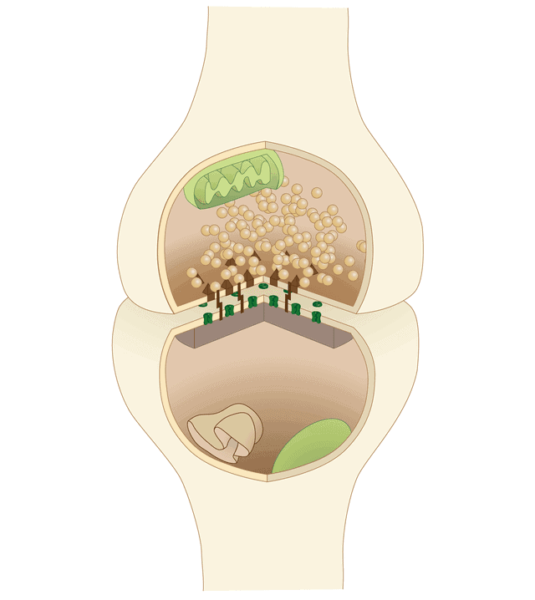Have you ever wondered about what it is that could be going awry at the microscopic level to cause some of the devastating symptoms that are evident in so many diseases? Whether you have or haven’t, this is a question a lot of biomedical scientists find themselves asking. For most diseases there exists a set of well-described symptoms that are used to identify, diagnose, and treat patients. However, for these same diseases, it can be an enormous challenge to be able to identify the exact cellular and molecular causes. In the most recent issue of The Journal of Neuroscience, a group of researchers out of Sweden have identified important cellular changes in a mouse model of Huntington’s disease (HD), changes that are made worse by modifying the sensory experience of these animals.
In this study, Murmu et al. probe the synaptic deficits associated with HD by using a fluorescent imaging technique, two-photon microscopy, in a mouse model of the disease. Two-photon microscopy allows researchers to image deeper into tissue and to image cellular features in alive animals. By using this technique the authors were able to track the changes in dendritic spines, small protrusions located on neuronal processes where excitatory synapses are made, in order to study how these structures change in relation to the sensory experience of these HD animals.
The authors of the study have previously shown deficits in the synaptic spines of these mice as baseline. Specifically, the authors have shown that the number of “persistent-type” spines, a set of spines important for maintaining neural circuitry and for normal learning and memory, are decreased in HD mice. In this study, to investigate how sensory experience further alters spines in these animals, the authors trimmed the whiskers of control and HD model mice, a treatment that would disrupt the normal sensory perception experienced by these mice. Sensory experience is known to modulate synaptic connections and specific forms of plasticity that are based on sensory experience. Thus, this manipulation allowed the authors to measure how this change in sensory experience might drive changes in dendritic spines. Interestingly, it was found that this treatment actually exacerbated the spine deficits that are normally seen at baseline in these mice. Specifically, the authors quantified what they define as “lost persistent” (LP) spines, spines that were persistent early on but subsequently disappeared. In the HD animals, whisker trimming increased the spine density of LP spines, indicating that sensory experience has larger effects on synaptic spines in the HD animals than in the control animals.
Under normal conditions, sensory experience causes corresponding synaptic contacts to become active, releasing transmitter at the synapse, and causing a small change to the partnering neuron. These changes can include alterations in protein content, transport, synthesis, and degradation, modulating how these neurons subsequently respond to the same sensory experience. Therefore, the increased density of LP spines on the imaged dendrites in this study may suggest that there is a disruption in experience-dependent synaptic activity and plasticity in addition to the deficits in spine persistence that are observed at baseline.
In addition to the density of spines, the authors also quantified levels of the synaptic protein PSD-95, a scaffolding protein that plays an important role in synapse maintenance and function. PSD-95 protein levels were reduce in neurons from HD mice, suggesting that this finding could underlie some of the synaptic deficits observed in these animals . The authors also used electron microscopy to study synaptic density. Here they observed a significant decrease in the synaptic density in the brains from the HD animals.
Together, these results suggest that cortical neurons from HD model mice have a decrease in persistent spines at baseline, a deficit that is exaggerated by altering sensory experience by whisker trimming. Additionally, the authors observed changes in both synaptic density as measured by electron microscopy, and reductions in PSD-95, an important synaptic protein. These observed changes suggest that cortical circuitry, synaptic computation, or synaptic activity may be disrupted in these animals, as the formation of stable and persistent dendritic spines is important for the normal functioning of these phenomena. Moreover, changes in these processes could underly some of the symptoms associated with HD, particularly the cognitive impairments that are sometimes observed in this disorder. Based on the data presented in this study, the processes of spine conversion and maintenance could act as a potential target for pharmacological therapy in the future to see if such changes are truly involved in the disease processes underlying Huntington’s disease.
Murmu, R. P., Li, W., Szepesi, Z., & Li, J. Y. (2015). Altered Sensory Experience Exacerbates Stable Dendritic Spine and Synapse Loss in a Mouse Model of Huntington’s Disease. Journal of Neuroscience, 35(1), 287–298. doi:10.1523/JNEUROSCI.0244-14.2015


